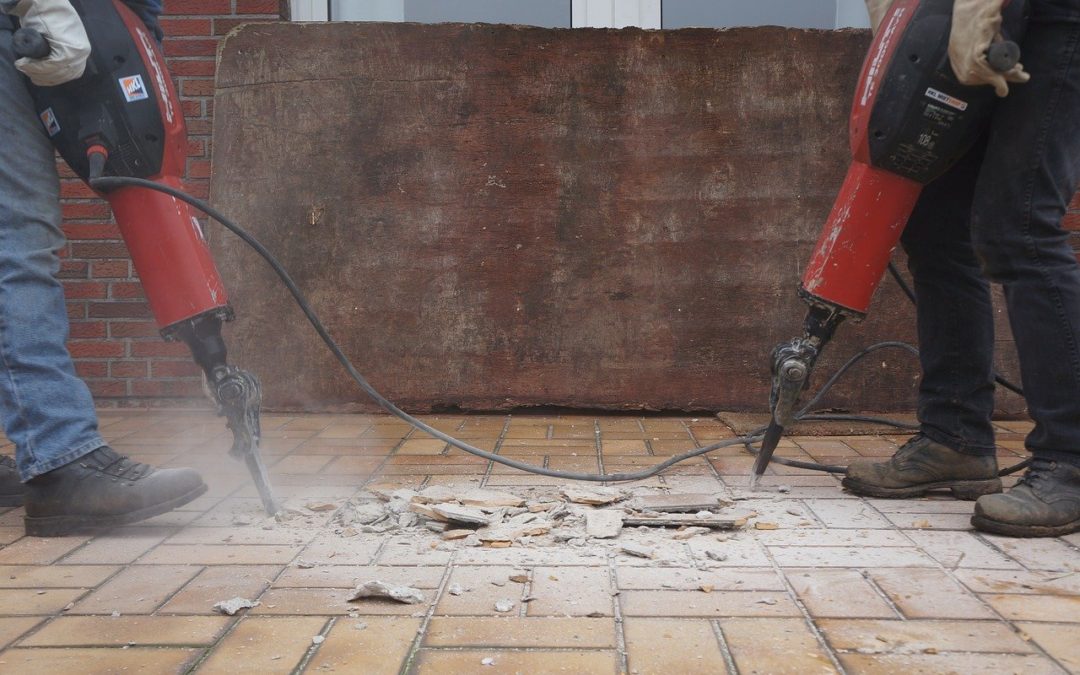How to Mitigate Your Company’s Risk for Hand-Arm Vibration Syndrome
Not all ergonomic injuries are rooted in repetitive physical movement. One of the most common ergonomic injuries is caused by the regular use of tools that vibrate. Hand-Arm Vibration (HAV) may lead to long-term injury by either operating equipment that transfers vibration into the hands and arms or by handling material being processed by machines that cause vibration.
If a person regularly works with vibrating tools or machines, you can expect that person to experience physical health issues over time that will require medical attention. Hand vibration or hand-arm vibration syndrome (HAVS) causes both circulatory and neural effects in the fingers and arms. Signs and symptoms of HAVS include numbness, pain, and blanching (turning ashen or pale).
Vibration restricts the blood supply to both the hands and fingers, which can contribute to a physical injury over time. HAVS can present as a variety of chronic and painful ailments.
- White finger, or Raynaud’s syndrome
- Carpel tunnel syndrome
- Tendinitis
- Shaking
- Tremors
- Pulsation
Tools known to increase the associated risk with hand vibration and HAV issues include the following:
- Lawnmowers
- Weed trimmers
- Brush cutters
- Hammer drills
- Jackhammers
- Orbital sanders
- Chainsaws
- Jigsaws
- Cut-off saws
- Hand-held grinders
- Power sanders
- Power hammers
- Power chisels
- Impulse tools
- Ratchet screwdrivers
- Concrete breakers
- Impact wrenches
- Pedestal grinders
- Floor polishers
- Carpet strippers
- Chipping hammers
- Percussive tools
- And more
Breakthroughs in Ergonomics and Hand Vibration
McClure Ergonomics constantly continues our education in the ergonomics field in order to bring you the most up-to-date knowledge and corrective methods. Currently, the United Kingdom is the world leader in HAV-related ergonomics. The UK developed guidelines under the Control of Vibration at Work Regulations in 2005 using the 2002 EU Physical Agents (Vibration) Directive. McClure Ergonomics seeks education directly from those sources in order to incorporate this field of study into our focused service offerings.
How We Calculate Your Hand-Arm Vibration (HAV) Risk
In the near future, McClure Ergonomics will use the Hand-Arm Vibration Exposure Calculator as an effective tool to determine the risk of HAVS in the workplace. We will measure two factors, which get input into the calculator.
Vibration Magnitude: The amount of actual vibration is measured using a vibration meter (coming soon). We’ll conduct multiple tests over a designated period of time, then find the average value from all tests taken. We measure the vibration magnitude in a unit of acceleration, meters per second, squared (m/s²), and enter into the calculator.
Exposure Duration: Next, we determine an individual’s exposure to vibration by observing a sample work period. We also factor in the production rates, as obtained from the department supervisor, in order to determine the maximum number of repetitions required in a typical eight-hour shift.
McClure Ergonomics will combine these measurements together in the HAV Exposure Calculator to determine the total HAV risk. A Total Exposure Point Value of 100 or greater indicates an increased risk to workers performing that job function. A Total Exposure Point Value of 400 or greater indicates that safe limits have been surpassed.
At a value of 400 or more, employees are considered to be at significant risk of developing HAVS. We will recommend controls that will curb the risk to the employee and mitigate overall exposure. In addition, following the recommended steps will save the employer money in the long run in downtime, while reducing both employee injuries and employee loss.
Possible HAVS Ergonomic Solutions
As your ergonomic specialist, we take several different approaches in lowering the risk for HAVS, including ergonomically designed anti-vibration tools, anti-vibration full-fingered gloves, as well as changes in grip and tool handling and adding support measures. We also highly recommend that employees using vibration tools on a regular basis also avoid smoking because nicotine enhances the ability of blood vessels to spasm.
Do your workers use tools that may cause hand vibration (HAV) issues?
Schedule your ergonomics assessment with McClure Ergonomics Consulting.
We’ll assess your risk and create protocols to keep your workers safe.

